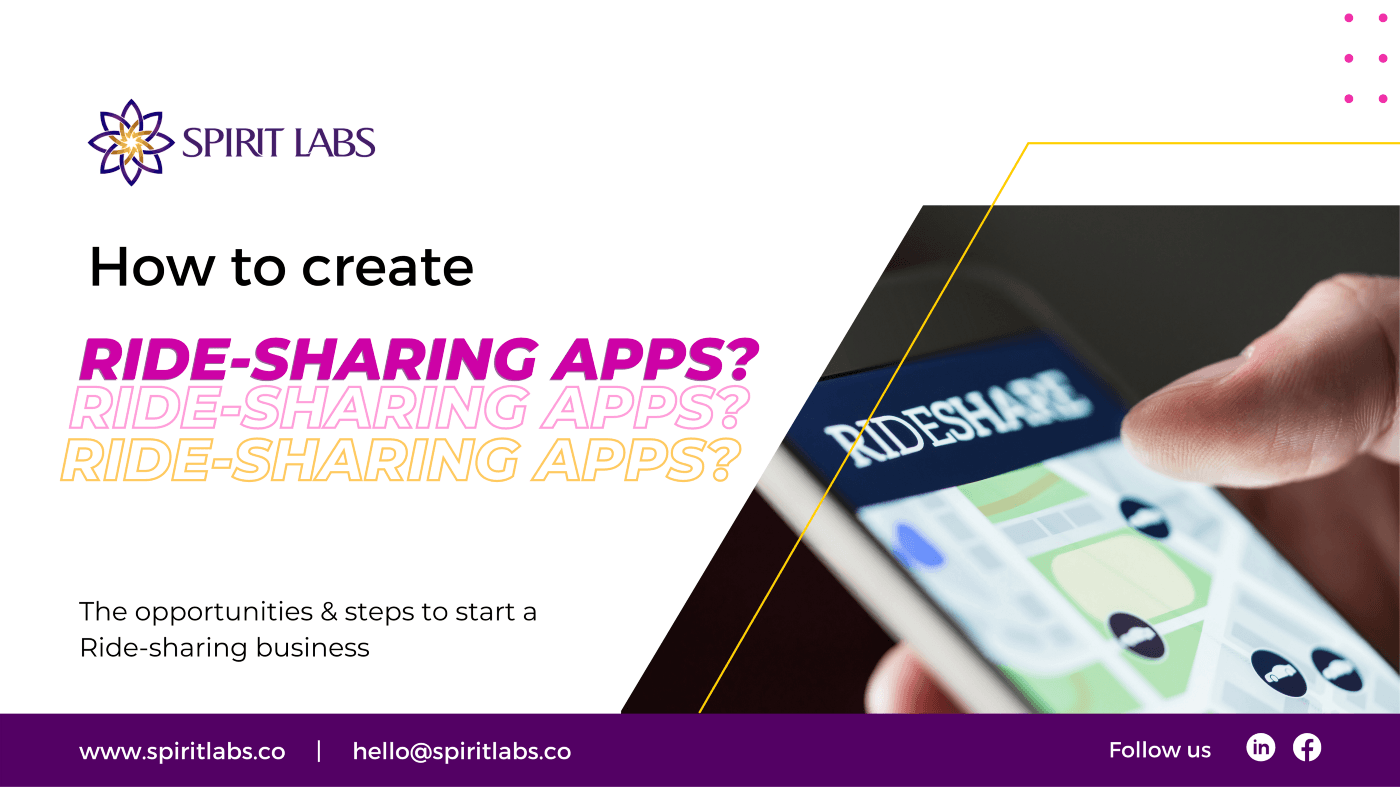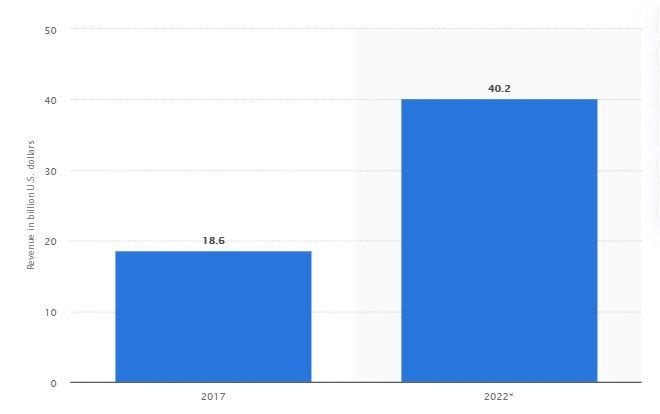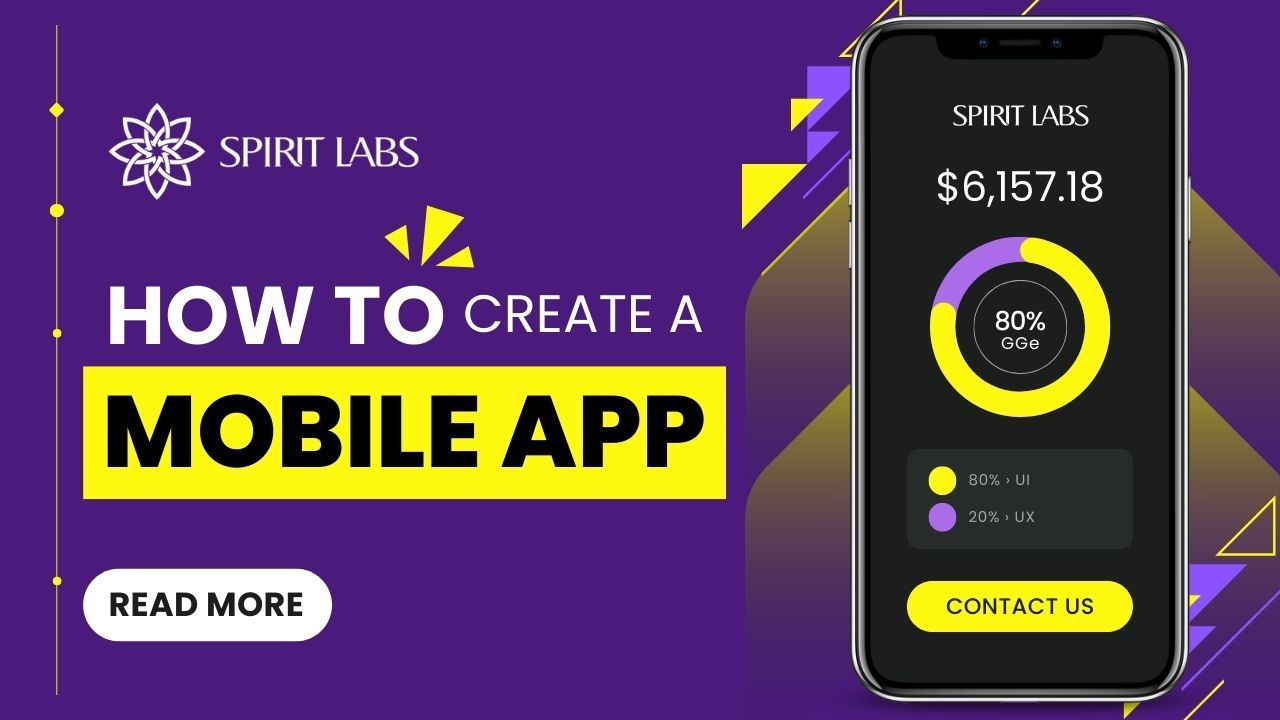
How To Create A Successful Ride-sharing App
The ride-sharing industry is a big and important part of the sharing economy in general. With the remarkable success of UBER, the global landscape of private transportation has changed dramatically with the introduction of the sharing economy. Ride-sharing, sharing economy for mobility, works on a peer-to-peer, driver-partner model on the digital platform while traditional taxi business heavily invests in vehicle-related assets such as vehicles, management costs, and wages, etc. Due to the light-asset business model, ride-sharing service providers have been able to scale their services worldwide with less marginal cost.
According to research and markets, the global ride-sharing market is projected to grow from USD 85.8 billion in 2021 and reach USD 185.1 billion in 2026, at a CAGR of 16.6%. For low-income households, the ride-share services mostly address a social need, where the potential impacts for high-income households are economic and environmental.
A ride-sharing service is a way for multiple riders to get to where they’re going by sharing a single vehicle, like a car or a van, that’s going in their direction. This vehicle makes multiple stops along a route to pick up and drop off passengers, reducing the need for multiple cars on the road.
Sharing rides is a long-standing tradition, but thanks to technological innovations, it becomes easier, more convenient, and more efficient. Innovative mobility services premised on pooling — getting multiple riders into the same vehicle — can lower travel costs, mitigate congestion, and reduce greenhouse gas emissions. They also offer travelers more mobility choices between the traditional bookends of auto ownership and public transit.
COVID-19 pandemic has impacted the ride-sharing business for a consecutive second year. However, according to experts, the ride-sharing industry would start its complete recovery from Q3 of 2021 or Q1 of 2022, and the key factor that would drive the demand for ride-sharing is urbanization. The majority of the population living in cities has shifted to their countryside; still, the urbanization rate in 2020 was close to 56% globally, which was 55% in 2019.
However, after the post-pandemic, more population is expected to return to the cities, which is expected to further increase the urbanization rate. This would bring back the urbanization rate, and slowly the basic needs of the population would start rising; transport would be one of these. This would be the foremost driver for bringing the ride-sharing industry revenues back on track.
The total global revenue from the sharing economy market is forecasted to reach $40.2 billion in 2022.

A global ride-sharing market is predicted to grow by over 50% between 2020 and 2021.
In general, the ride-sharing market value is expected to amount to approximately $117 billion in 2021.
Asia Pacific is estimated to be the largest market in 2021. The high population growth rate in the region and increasing urbanization have intensified the need for transportation. Most of the countries in the region are shifting their focus on smart personal mobility to reduce travel time and congestion. The Asia Pacific accounts for a significantly lower number of vehicles per 1,000 persons as the per capita income in most of these countries is lower than in Western countries. Hence, ride-sharing offers users a sense of owning a vehicle at a much lower cost than actually owning one.
The first thing that all startups and entrepreneurs should always do is research their competitors, both direct and indirect competitors. Make sure to research both direct and indirect competitors and come up with a UVP.
Remember to make your service unique. The unique value proposition defines the way your company and product/service are different from the competition. From studying the market and competitors, it is possible to see the blanks and challenges that your product can help fill and solve — that’s where your unique value proposition will come from.
There is no way a business is going to develop and grow unless it is monetized. Therefore, it’s important to have a ride-sharing business plan before you start to develop an app. Determining a monetization model early on may save you a future headache. Below, we talk more about ways to monetize a ride-sharing taxi app.
Hiring an in-house team or outsourcing is the main question here. It all depends on your budget, time, and location.
When thinking of making a ride-sharing app, the smart move in terms of money and time would be starting by creating an MVP. But before taking the plunge, we advise:
- Choosing the core feature for ride-sharing apps
- Prioritizing the features.
After building an MVP for 3–6 months, it will be possible to launch the ride-sharing app. This stage determines:
- How well the product is received on the market
- Whether there is a real request from the target audience for ride-sharing services
When the product is launched, it is vital to get as much customers’ feedback as possible since, based on them, you will determine where to pivot and make changes both to the technical and business sides of the ride-sharing app.
Significant product improvements can only happen after customers’ feedback is gathered. From there, you can shape up your product and build the best version of it.
Scaling your ride-sharing app is something you should think of ahead of time. However, only do it when the right time comes.
Here are a few tips on building a fully-featured product:
- If you have plans to scale your MVP, our advice is to make sure to scale the app at the right time. The app’s traffic should be one of the main indicators for scaling.
- We suggest making sure to choose technologies and a way of building a ride-sharing app so that it would be possible to scale the app further down the road.
There are 2 ways to build a ride-sharing app:
- Build two separate mobile apps for drivers and passengers.
- Create an all-in-one app.
Let’s look at the example of an all-in-one ride-sharing app and its main features.
Even if you decide to build an all-in-one ride-sharing app, it’s vital to understand that the app functionality will differ depending on who is accessing it.
Registration & Profile
For passengers: Most apps ask users to enter their email, phone number, and generate a password. And it’s a good idea to offer sign-ups or ins via Facebook, Twitter, or Google as it saves your users’ time. Don’t make tons of features, let users upload a photo, enter the name, phone, and car license numbers, add a payment method, and check their payment history.
For drivers: Users should be advised to submit an online tax number verification and get your company’s approval. In addition, they upload their personal information including contacts, names, photos, any other information that your company may need.
For personal profiles, we advise building the app in such a way that drivers can track their trips, earnings, tips, reviews, and feedback.
Notifications and chats
Ride-sharing apps are more user-friendly with a chatting system to let riders and drivers communicate. For example, to agree on a pickup point or notify about delays.
Another thing is keeping users informed. SMS, push notifications, or emails should notify about ride confirmations, change of a ride status, or payment notification.
Booking
To book a seat, passengers need to enter their destination, pick up and drop off points, then choose a driver among those who offer a ride, and see the total cost. The app should also show reviews and ratings for the passengers to consider and check-up.
At the same time, drivers should be able to look through booking requests and manually accept or decline them. Or set the app to accept all requests automatically.
My rides
Passengers see the number of rides they’ve completed and their details — date, destination, car, payment details — in the ‘archived’ tab.
If a driver creates a new ride, they need to choose the destination, pickup and drop off points, stopovers. Set the date and time they’re ready to pick up passengers and available seats. The drivers either let users book rides instantly or look through each request and manually approve it.
The app calculates the cost for each passenger based on their number and travel distance. Drivers either agree with it or edit the prices.
GPS Location
GPS is used to detect someone’s location, most apps use Google maps. Thanks to this, drivers can set exact pickup and drop-off points, while riders can see their whole route.
While picking a trip, riders review trip information together with the route. They can zoom in for geographical details on a roadmap and move about with directional controls.
Localization
If you are building an international ride-sharing app, then the ability to switch between languages is a must-have. Even if your company only operates in one country, it is advisable to make a multilingual ride-sharing app since there is a high probability of foreigners using your app.
Our advice: don’t go overboard with languages, make an app based on
- Its location of operation.
- English and any other official language that is spoken in that country.
Payments
As usual, ride-sharing apps will accept cash or trustworthy third-party payments like Paypal and Stripe. Payments should be processed before completing the ride. This way, even if a passenger decides to cancel a ride at the last minute, your driver won’t lose the money.
Admin Panel
The ride-sharing platform should come with an admin panel capable of managing and monitoring the platform’s work. It allows admins to manage users (search, block, check up an ID card), payments, reviews, reports, view statistics, etc.
Admin panels are typically web-based, so you’ll need to make sure your tech vendor provides web development services.
We, Spirit Labs, have intensive experience working with SMEs and Startups, combining business know-how and technology savvy. As usual but always crucial, to understand the scope of the project, we will work step by step with our clients to make sure everything is clear and consult them carefully, all for bringing out the best outcome. We have successfully launched many projects from different industries, including ride-sharing apps. In the previous ride-sharing apps, we implemented NodeJS, Java, Swift, along with other amazing tools and software like Firebase, AWS, Slack Chatbot, LINE Chatbot. Choosing the right technologies is a key to the success of a platform, knowing that, we also collaborate with our clients at every stage of the development process on account of our status update calls and sprint, retro, and demo days.
Got inspired by what we provided you and consider taking the next steps? Do not hesitate to contact us via: www.spiritlabs.co and we will give you a free consultation for your business plan.
REFERENCES:
Article: THE EVOLUTION OF RIDE-SHARING SERVICE AND TREND ASEAN
Article: Global Ride Sharing Market Report 2021: Market is Projected to Grow from $85.8 Billion in 2021 and Reach $185.1 Billion in 2026
Blog: How to Create a Ride-Sharing App in 2021: The Definitive Guide by Yaroslav Titenok
Blog: How to Create a Rideshare App and How Much It Costs [Full Estimate] by Maria D.


